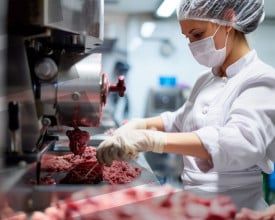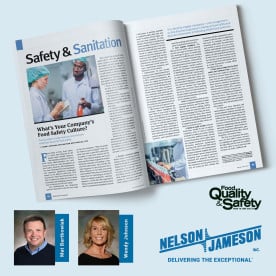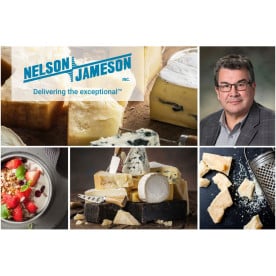Monthly Archives: October 2012
- October 30, 2012
Recently here at Nelson-Jameson, we had an employee deal with a food safety issue where they had purchased a compromised food item. Though not a pleasant experience, the process
- October 18, 2012
A pen is a pen; a glove is a glove, right? When purchasers are trying to adhere to the bottom line, this might make some sense. It doesn’t seem right that you should have to spend more on metal-detectable products, when you can buy it at the base price. As you figure out what is best for your operation, consider this: the price of something like a box of metal-detectable pens or a box of metal-detectable gloves are much less expensive than a recall caused by plastics contamination in your product.
For those that keep track of food recalls, “plastic contamination” is an all-too-familiar phrase. From cake to tuna to dog food, the discovery of plastic contaminates is a troubling event for both the customer and for the producer. Pen caps, pens, gloves, aprons, etc. are possible contaminants that can show up in a finished product, acting as choking hazards, laceration hazards, biological hazards, and as a shock to those consuming the product or to those serving it.
- October 15, 2012
From August through October, “The Wide Line” blog will feature a series of columns authored by Dan Strongin, a well-known name in the food industry.
- October 10, 2012
In the past several years we’ve seen an unprecedented amount of debate as well as cooperative planning amongst governmental agencies, health researchers and healthcare providers, food industry interests, and many others to address concerns regarding the amount of salt Americans are consuming. The potential fallout, according to the CDC, of our national taste for salt includes hypertension (high blood pressure), “a major contributor to cardiovascular diseases, which are a leading cause of death, disability, and health-care costs in the United States.”
For cheese-makers this poses a few problems. The use of salt in cheese-making, a necessary part of the process, has been a focus in this debate. In cheese, salt
- October 08, 2012
From August through October, “The Wide Line” blog will feature a series of columns authored by Dan Strongin, a well-known name in the food industry.
Snippets from a conversation with John Nelson, CEO and Jerry Lippert, President of Nelson-Jameson, Inc.
I sat down with John and Jerry for a chat recently, by way of Skype, in order to help understand the view from the top.
Part One: Why One-Stop Shopping?
John –I'll offer an historical perspective. In 1947 when we began, our original business model was a general store for cheese manufacturers. This was the perception of a guy named Jameson, who left the company within a couple of years. He had been a salesman for a long time in the cheese industry, selling equipment, and peering over the fence. He thought that a one-stop shop, or a general store seemed like a good idea, and the model has worked very well. One of the best rationales I think, even today, was/is the impact on freight cost. Often when companies look at their cost of merchandise and material, they don't add in freight cost; they put it in a separate column. - October 05, 2012
October is a month of crunchy leaves, harvest festivals, and refined sugar. Thankfully for cheese lovers, it is also a time to bask in the glory of cheese. American Cheese Month, presented by the American Cheese Society, is this October! Get out your cheese tester, your cheese slicer, and your general regard for this food staple. Across the nation, folks are gearing up for tastings, workshops, meeting their favorite cheese makers, and many other events. You can check out the full calendar of events occurring across the nation right here.
The American Cheese Society site features ideas that can help you get your operation and/or love of cheese involved in this national celebration. Chefs, cheesemakers, cheese enthusiasts, and many more are encouraged to spread the word on appreciating cheese. The celebration is meant to:
- October 02, 2012
An article in the April/May 2012 Food Safety Magazine entitled, “An Integrated
- October 02, 2012
In honor of American Cheese Month, we are awarding our popular Cheese Slicer to anyone writing a product review on our website in October!
Here's how to win: Find your favorite product from Nelson-Jameson on nelsonjameson.com and add a review (review as many products as you want, but only one gift per person). We will pick someone to win each day through October. The winner will receive a FREE cheese slicer to use with your favorite cheese during American Cheese Month and all year long!





